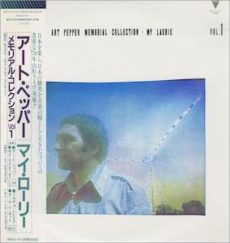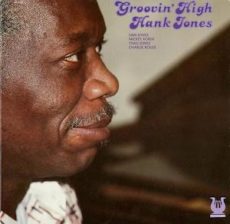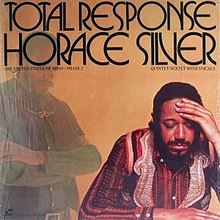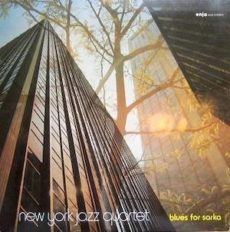
Requisites
My Laurie ~ Art Pepper | By Eddie Carter
I’ve listened to and enjoyed the music of Art Pepper for many years. Despite his drug addiction and times spent in prison that interrupted his career, he recorded some great live and studio albums. My Laurie (Trio Records PAP-25037) is a 1978 live performance documenting the final part of a twenty-one-day, nineteen concert Japanese tour by the quartet. It was also the alto saxophonist’s first tour with his group, Milcho Leviev on piano, Bob Magnusson, on bass, and Carl Burnett on drums. My copy used in this report is the 1983 Japanese Mono release.
Side One starts with an original tune from Art’s pen, Ophelia. The quartet gets our fingers popping on the collective melody. Art is up first and sparkles brightly on the opening solo, then Milcho takes an infectiously swinging turn next. Bob comes in and has his say on a lively reading. Carl shares a feisty finale with Art ahead of the ending and the trio’s introductions.
Bésame Mucho by Consuelo Velázquez and Sunny Skylar is one of the most popular and recorded songs in jazz. Pepper stretches himself ambitiously on the vivacious introduction preceding the song’s theme. Art then tugs at our emotions with a heartfelt first solo. Leviev begins the second reading with a tender lyricism that soars briskly to a satisfying finish. Magnusson has a short say next leading to the foursome’s gorgeous exit and the crowd expressing their approval.
My Laurie is Art’s loving tribute to his wife occupying the second side. The ensemble makes a regal introduction into a gentle melody by the altoist. He makes a compelling case with two beautifully expressed readings culminating with appreciative applause from the audience at the song’s end. Sandwiched between Art’s solos is a tender interpretation by Milcho.
The concert was produced by Haruo Serikawa, the recording engineer was Morio Shoya, and the remastering for My Laurie is by James Mooney. The sound quality on Side One is excellent with a vibrant soundstage across the highs, midrange, and low end. On Side Two, there’s a slight bit of harshness during Pepper’s second solo on My Laurie. That said, I hope that won’t dissuade you from seeking out this album for a spot in your library. The highlight for me personally is Bésame Mucho, the quartet gives this old favorite new life with an exceptionally fresh and creative approach. There are three other live records in The Art Pepper Memorial Collection, and I’ll be on the lookout for them. If you’re a longtime fan of his or are just discovering his music, I hope you’ll consider My Laurie by Art Pepper on your next vinyl expedition. He’s in great form here and the rhythm section compliments him splendidly!
~ The Summer Knows, Vol. 2 (Trio Records PAP-25038), I’ll Remember April, Vol. 3 (Trio Records PAP-25041), A Night In Tunisia, Vol. 4 (Trio Records PAP-25044) – Source: Discogs.com ~ Bésame Mucho – Source: JazzStandards.com © 2022 by Edward Thomas Carter
More Posts: choice,classic,collectible,collector,history,instrumental,jazz,music,saxophone

Daily Dose Of Jazz…
Nenad Vasilic was born on May 8, 1975 in Niš, Serbia and started playing piano at the age of 5. By twelve he received his first bass guitar and at the age of 15 he enrolled in the Secondary Music School in Niš. When he was 19 he studied contrabass and bass guitar at the Jazz Academy in Graz, Austria.
In 1998 he formed his own band Vasilić Nenad Balkan Band and 1999 saw him in Austria recording his debut album as a leader titled Jugobasija. Since that first outing he has produced albums as a band leader, double bass player and composer, collaborating with jazz singers Mark Murphy and Sheila Jordan, as well as Ritchie Beirah, Peter Ralchev, Vlatko Stefanovski, Wolfgang Puschnig, Bojan Zulfikarpasic, John Hollenbeck, Martin Lubenov, Stjepko Gut, Bilja Krstić, Tamara Obrovac, Lori Antonioli, Amira Medunjanin and others.
Bassist, composer and bandleader Nenad Vasilic continues to explore the possibilities of his music creativity.
More Posts: bandleader,bass,history,instrumental,jazz,music

Requisites
Groovin’ High ~ Hank Jones | By Eddie Carter
This morning’s discussion begins with a 1979 album by Hank Jones recalling the music of Bebop, Groovin’ High (Muse Records MR 5169). Hank was born in 1918 and was one of seven children. His mom sang, and his two older sisters also played piano. His two younger brothers, Thad and Elvin would also become successful jazz musicians. A pianist of great versatility, Hank recorded over sixty albums as a leader and appeared on numerous others as a sideman. The musicians he worked with over his extensive career reads like an Encyclopedia Britannica of Jazz. Hank’s backed by brother Thad Jones (tracks: A2, A3, B1 to B3) on cornet, Charlie Rouse (tracks: A2, A3, B2, B3) on tenor sax, Sam Jones on bass, and Mickey Roker on drums. My copy used in this report is the original US Stereo album.
Side One opens with a tune by Dizzy Gillespie titled Algo Bueno. If you don’t recognize the name, it’s better known as the jazz standard, Woody‘n You. The trio is firing on all cylinders from the start of the brightly swinging melody. Hank is up first and delivers evident enjoyment on the keys. Sam walks the bass next in a cheerful and lively performance before the threesome regroups for the ending. Anthropology by Dizzy Gillespie and Charlie Parker takes the tempo upward on the quintet’s melody. Charlie and Thad share solo duties on the lead solo, then each gives an individual statement. Hank responds with some vivacious notes next, followed by Sam and Mickey who contribute two concise comments ahead of the closing chorus.
Sippin’ at Bells by Miles Davis is up next and receives a samba treatment beginning with the quintet’s danceable theme after a brief trio introduction. Charlie takes the lead and displays incredible warmth in the opening statement. Sam steps up next for an attractive performance, followed by Thad who offers a superb example of choice notes in the third solo. Hank has the final word and closes with an especially lovely interpretation into the group’s exit. Blue Monk is the first of three tunes by Thelonious Monk in this set. The first side finale opens with the ensemble paying homage to a tune Monk recorded the most. Hank begins with an alluring reading, then Sam’s closing statement adds some gentle lines leading to the climax.
Dizzy Gillespie’s jazz standard, Groovin’ High begins Side Two as a quartet performance with Thad establishing a nice momentum on the theme using a mute. He continues with an endearing opening performance that winks to Dizzy as it unfolds. Hank breezes into the second reading making a profound impression, and Mickey exchanges a brief conversation with Thad and Hank before the close. Monk’s second contribution, I Mean You is a lively little jam affording everyone a solo opportunity and gets underway with the ensemble’s spirited theme. Rouse gets into a vivacious groove on the first reading. Thad swings sprightly on the second solo, then Hank comes next with an impressive interpretation. Sam follows with some solid bass lines and Mickey fuels the finale with some brisk brushwork.
Monk’s Jackie-ing starts deceptively at a relaxed tempo with the quintet playing a march, then Thad delivers some exciting fireworks on the first solo. Charlie cooks for a few scintillating choruses next. Hank shifts into high gear on the third reading and Mickey takes us home with a fiery finale culminating with the group’s reprise and slow fade. Groovin’ High was produced by Fred Seibert and Rudy Van Gelder was the man behind the dials. The sound quality of this album is first-rate. The instruments come alive with an impressive soundstage for an album that’s over four decades old. If you enjoy jazz piano, are a Bebop fan, or are just discovering this talented musician, I invite you to audition Groovin’ High by Hank Jones for a spot in your library. It’s a thoroughly entertaining album that’s a pleasure to hear any time of the day or evening!
~ Blue Monk, Groovin’ High, Woody’n You – Source: JazzStandards.com
~ Anthropology – Source: Wikipedia.org
© 2022 by Edward Thomas Carter
More Posts: choice,classic,collectible,collector,history,instrumental,jazz,music,piano

The Quarantined Jazz Voyager
Reading the history of humanity, evidence proves that bad decisions are not relegated to bad people but are also made by good people. If taking off a face mask is your back to normal, in my opinion, you’re not reaching high enough and the brass ring has passed you by. Legislators and the media are confounding the public with different opinions, playing the he said she said game. The collusion is abomidable and most are buying into it. Remain vigilant, protect yourself, remain healthy.
This week I have chosen Total Response (subtitled The United States of Mind Phase 2) for our listening pleasure. It is an album by pianist Horace Silver that was recorded on two separate dates, November 15, 1970 (tracks 1,2,6,9) and January 29, 1971 (tracks 3,4,5,7,8). It was recorded at Van Gelder Studios in Englewood Cliffs, New Jersey, released in April 1972 on Blue Note Records, and produced by Francis Wolff and George Butler.
In 2004, it was included as the second of a trilogy of albums compiled on CD as The United States of Mind. Track List | 45:11 All compositions by Horace Silver
- Acid, Pot or Pills ~ 4:26
- What Kind of Animal Am I ~ 3:38
- Won’t You Open up Your Senses ~ 3:56
- I’ve Had a Little Talk ~ 3:46
- Soul Searching ~ 4:15
- Big Business ~ 5:22
- I’m Aware of the Animals Within Me ~ 3:45
- Old Mother Nature Calls ~ 6:17
- Total Response ~ 5:22
- Horace Silver – electric piano
- Cecil Bridgewater – trumpet, flugelhorn
- Harold Vick – tenor saxophone
- Richie Resnicoff – guitar
- Bob Cranshaw – electric bass
- Mickey Roker – drums
- Salome Bey (1, 2, 5-7, 9), Andy Bey (3, 4, 8) – vocals
More Posts: adventure,album,club,genius,jazz,museum,music,piano,preserving,restaurant,travel

The Quarantined Jazz Voyager
Remaining hesitant to be in crowds of people without a mask, more and more people are unmasking while we are still in the pandemic. Legislators are speaking unmask rhetoric and otherwise responsible people are listening. This Jazz Voyager is listening to my conscience and protecting myself and those around me.
This week I have chosen another quartet recording by the New York Jazz Quartet, founded by pianist Roland Hanna. The first iteration of the group consisted of flautist Hubert Laws, bassist Ron Carter, and drummer Billy Cobham. In 1974 the lineup changed to Frank Wess, bassist George Mraz, and drummer Ben Riley. Drummers Richie Pratt and Grady Tate also were enlisted to contribute their talents to the group at different times through the decade the band was together. The group recorded for the Inner City, Enja, Salvation and Sonet Records from 1972 to 1982
This album is the group’s fourth release, Blues For Sarka, recorded live on May 17, 1978 at The Domicile in Munich, West Germany. It was produced by Horst Weber and Matthias Winckelmann, recorded by Carlos Albrecht and released the same year on Enja Records. The cover photography was taken by Josef Werkmeister and the cover design was by Weber & Winckelmann
Track List | 45:11 All compositions by Roland Hanna except as indicated- All Blues (Miles Davis) ~ 15:29
- Rodney Round Robin ~ 5:44
- I’ll Tell You Tonite (George Mraz) ~ 7:14
- Blues for Sarka (George Mraz) ~ 7:11
- Smelly Jelly Belly ~ 9:33
- Frank Wess ~ flute, tenor saxophone
- Roland Hanna ~ piano
- George Mraz ~ bass
- Grady Tate ~ drums
More Posts: adventure,album,bass,club,drums,flute,genius,jazz,museum,music,piano,preserving,restaurant,saxophone,travel




